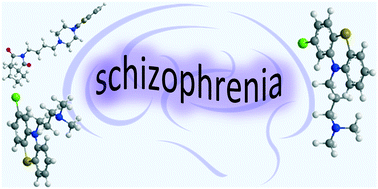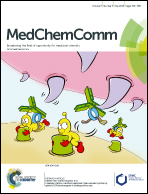Schizophrenia: synthetic strategies and recent advances in drug design
Abstract
Schizophrenia is a complex and unpredictable mental disorder which affects several domains of cognition and behaviour. It is a heterogeneous illness characterised by positive, negative, and cognitive symptoms, often accompanied by signs of depression. In this tutorial review, we discuss recent progress in understanding the target sites and mechanisms of action of second-generation antipsychotic drugs. Progress in identifying and defining target sites has been accelerated recently by advances in neuroscience, and newly developed agents that regulate signalling by the main excitatory neurotransmitters in the brain are surveyed. Examples of novel molecules for the treatment of schizophrenia in preclinical and clinical development and their industrial sponsors are highlighted.



 Please wait while we load your content...
Please wait while we load your content...